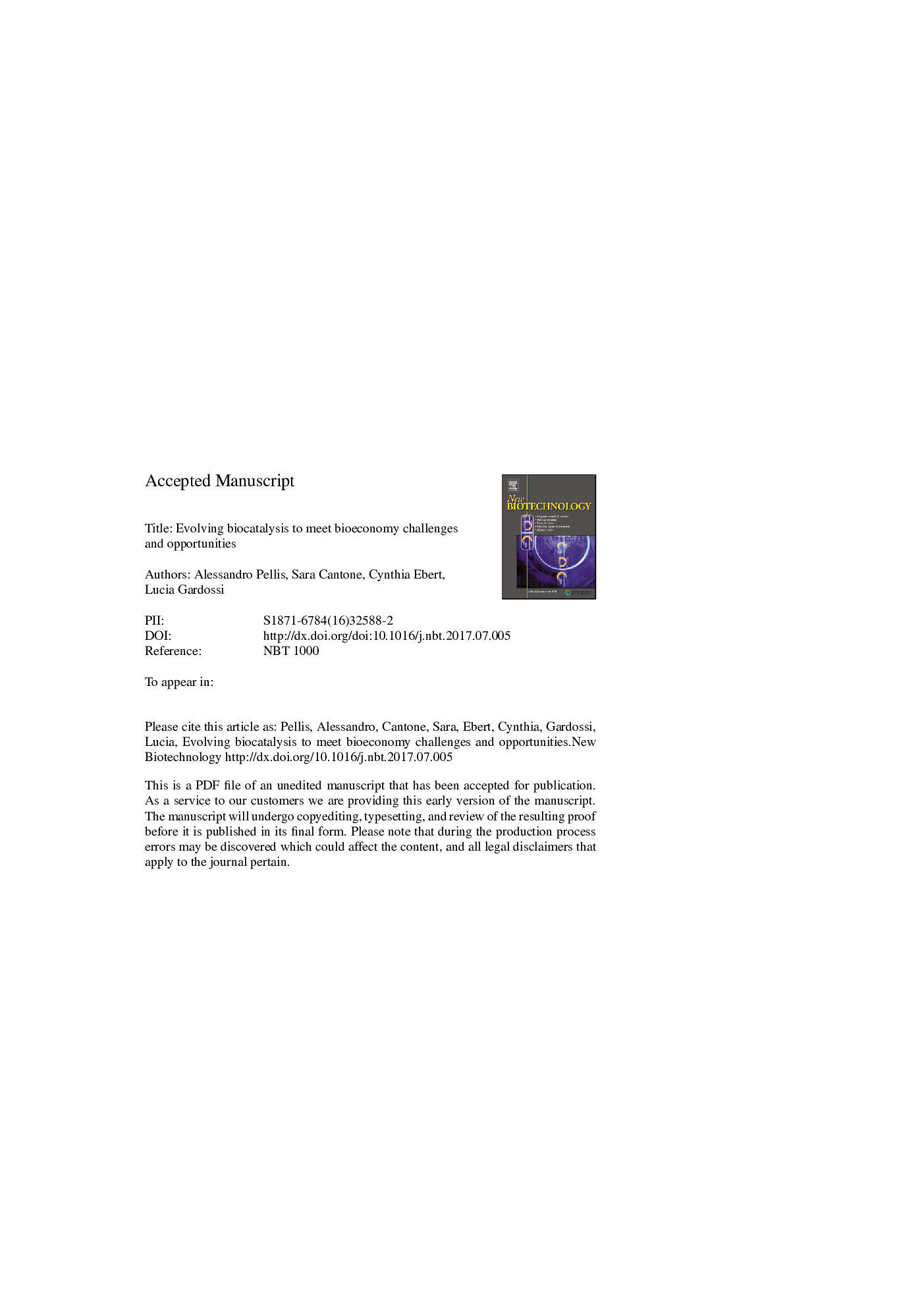| Article ID | Journal | Published Year | Pages | File Type |
|---|---|---|---|---|
| 6494959 | New Biotechnology | 2018 | 50 Pages |
Abstract
The unique selectivity of enzymes, along with their remarkable catalytic activity, constitute powerful tools for transforming renewable feedstock and also for adding value to an array of building blocks and monomers produced by the emerging bio-based chemistry sector. Although some relevant biotransformations run at the ton scale demonstrate the success of biocatalysis in industry, there is still a huge untapped potential of catalytic activities available for targeted valorization of new raw materials, such as waste streams and CO2. For decades, the needs of the pharmaceutical and fine chemistry sectors have driven scientific research in the field of biocatalysis. Nowadays, such consolidated advances have the potential to translate into effective innovation for the benefit of bio-based chemistry. However, the new scenario of bioeconomy requires a stringent integration between scientific advances and economics, and environmental as well as technological constraints. Computational methods and tools for effective big-data analysis are expected to boost the use of enzymes for the transformation of a new array of renewable feedstock and, ultimately, to enlarge the scope of biocatalysis.
Keywords
Related Topics
Physical Sciences and Engineering
Chemical Engineering
Bioengineering
Authors
Alessandro Pellis, Sara Cantone, Cynthia Ebert, Lucia Gardossi,
